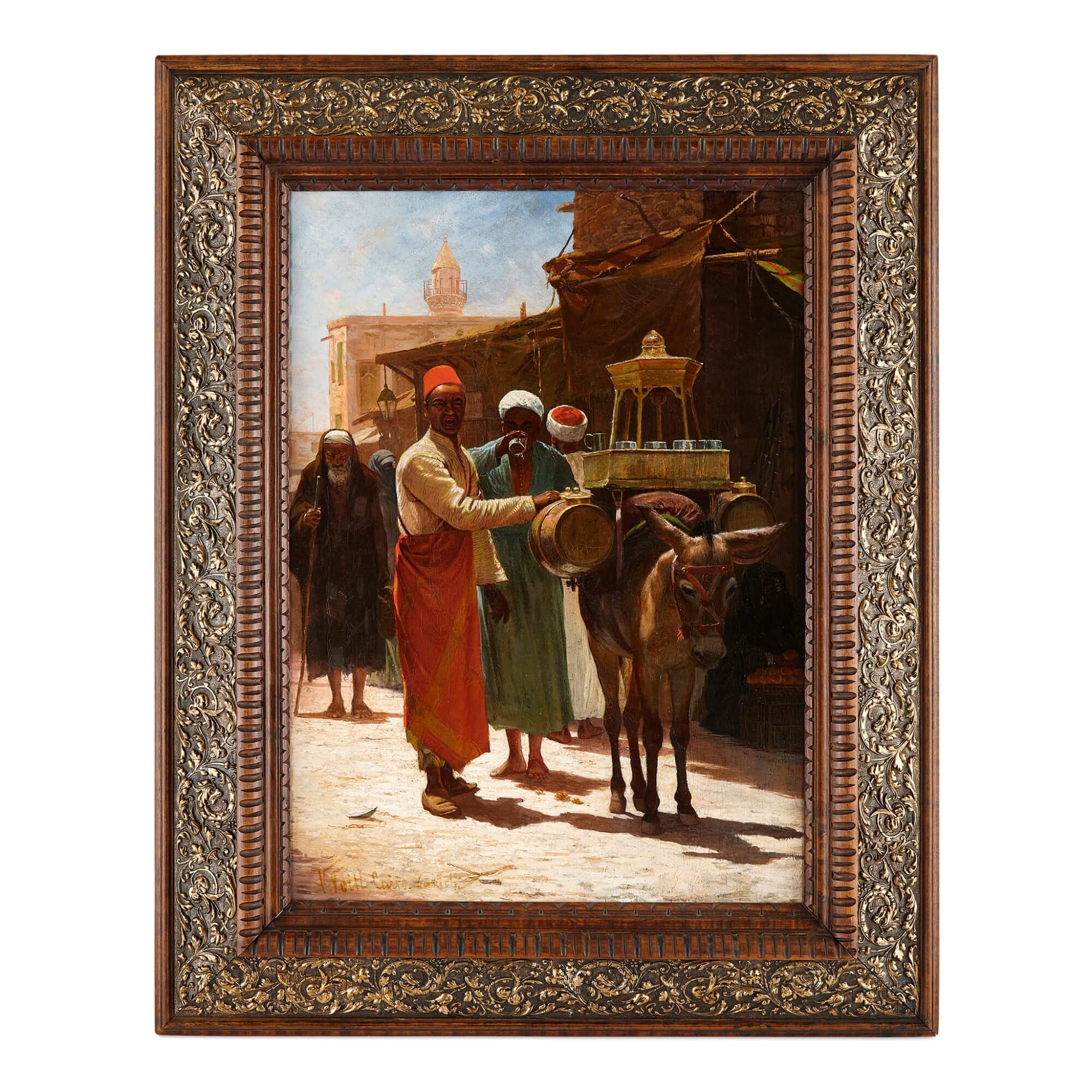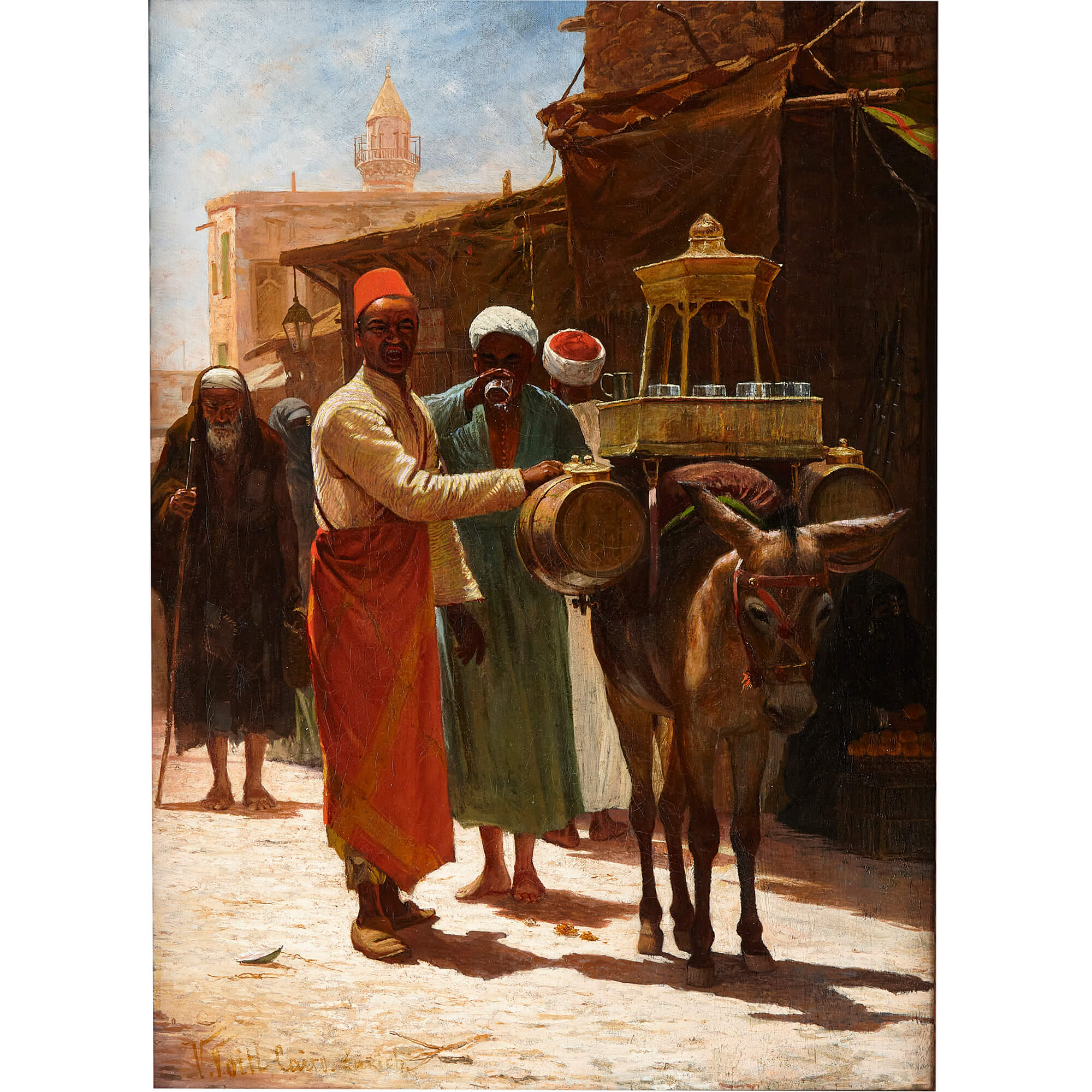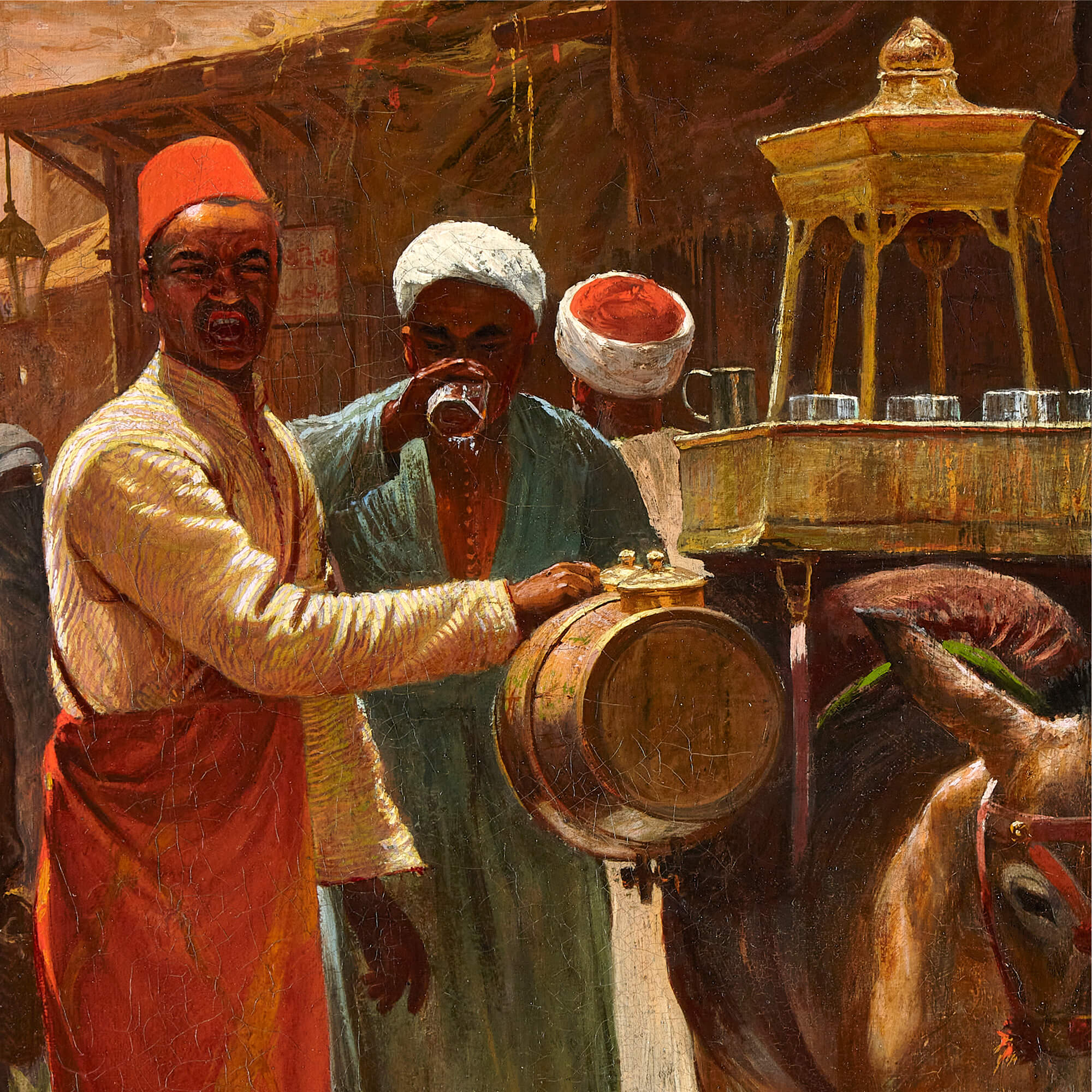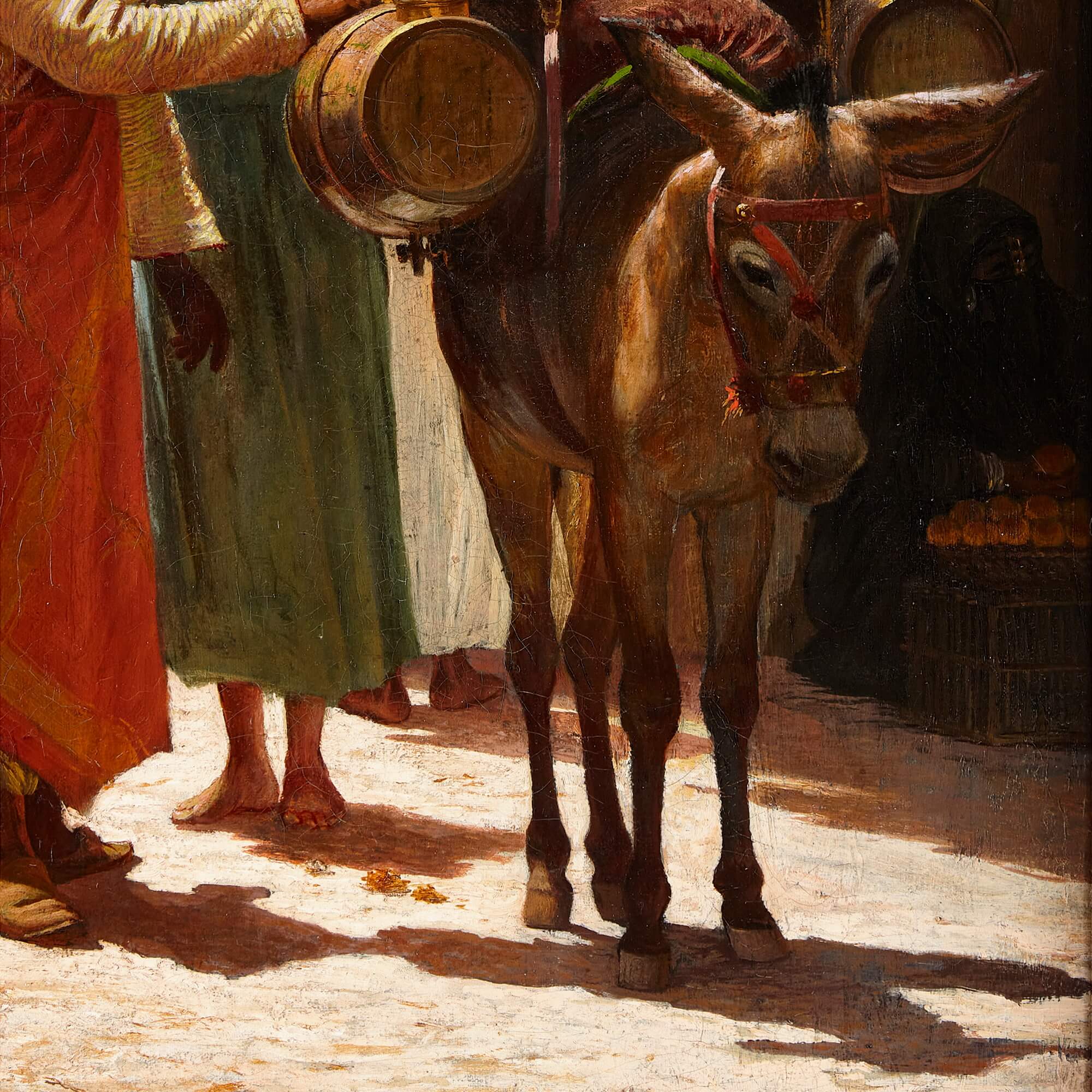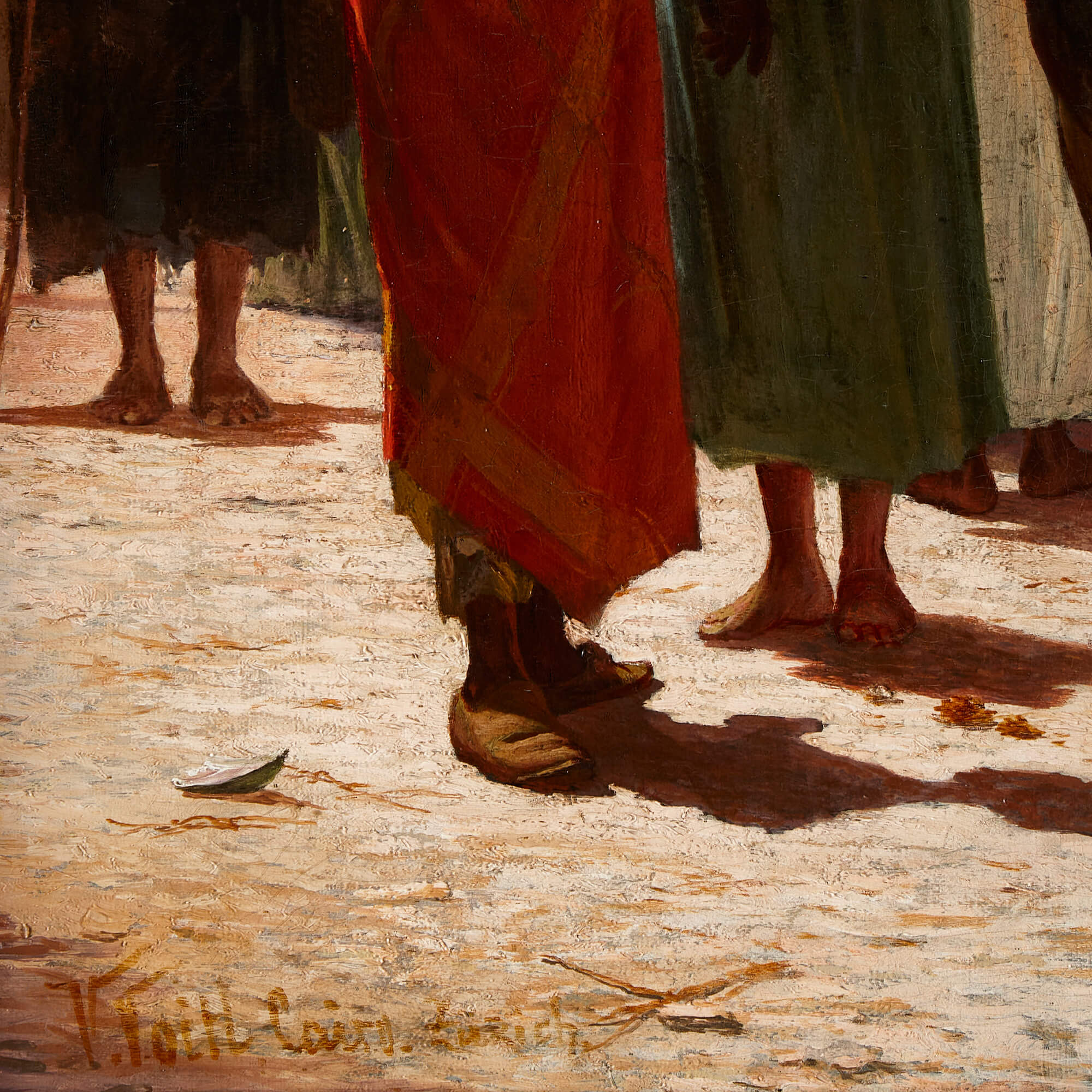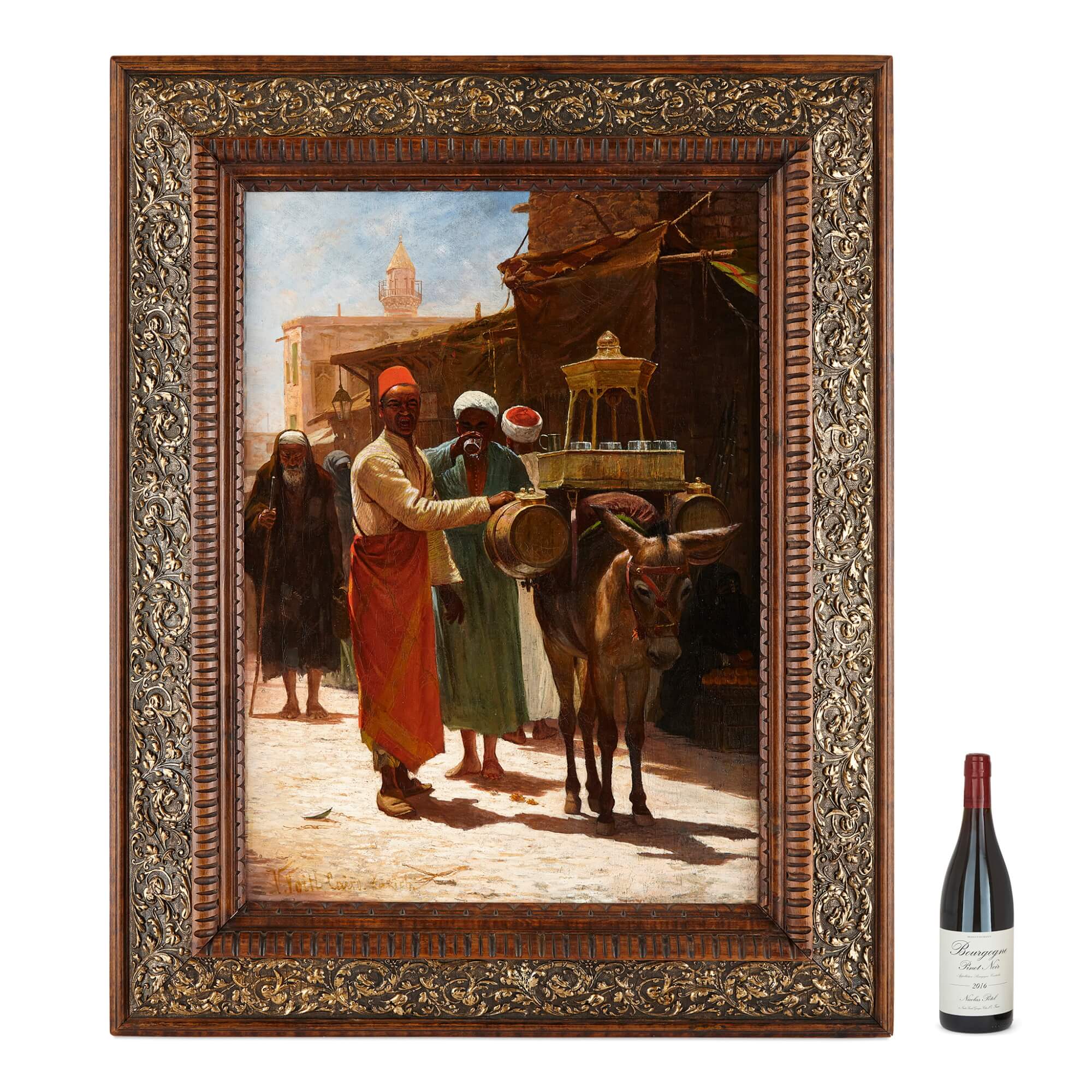The vivacity of V. Voill's orientalist painting draws the viewer's eye directly to the heart of the bustling streets of Cairo. Skillfully crafted with oil on canvas in the 19th Century, the scene captures a nomad drinks salesman selling his refreshments from the back of a mule, a direct testament to the spirit of Egyptian streets and traditions.
Dressed in a rich red robe, with a contrasting patterned shirt peeking through, the salesman is a central figure. His fez hat sits atop his head, and waits for a nearby customer, who is shown holding a cup, to enjoy his drink, most likely an erk sous. Their interaction is central, and Voill's adept hand makes sure to lavish the salesman figure in striking detail, contrasting it against a more subdued backdrop.
Adjacent to the drink seller and customer, an older male figure, hunched slightly and aided by a cane, is portrayed walking by setting the scene in a busy street. Clad in traditional Egyptian attire, including white head-wraps and simple robes, he, and other background figures which one can only perceive, but who contribute to the ambiance of the scene, are rendered in more muted colors. This choice provides a harmonious contrast, emphasizing the main interaction without detracting from the depth and life of the setting.
The mule, patiently standing, is a token of detailed artistry. Its hair and muscles are rendered realistically, and the drinks cabinet it bears is crafted with just as much precision. Each bottle, cup, and detail hints at the artisan's care.
Beyond the figures, a vast building stretches upwards, its warm beige tones shimmering under the morning sunlight, suggesting a bustling day ahead. The azure sky, spotted with vague white clouds, provides a brilliant canvas that not only highlights the action below but also offers a serene contrast to the liveliness of the street scene.
Voill's signature and inscriptions, 'V. Voill. Cairo. Zürich', placed subtly on the lower left, mark this painting as not just a creation, but a piece of his own artistic journey, from Cairo to Zurich. Held within a carved wooden frame, this piece is more than just art; it's a moment in time, an ode to a bygone era, and a celebration of the merger between naturalism and orientalism. Including it in the interior design of a living room or office would convey charm and point of contact with days of old.
Canvas: Height 65cm, width 47cm, depth 2cm
Frame: Height 87cm, width 69cm, depth 7cm




